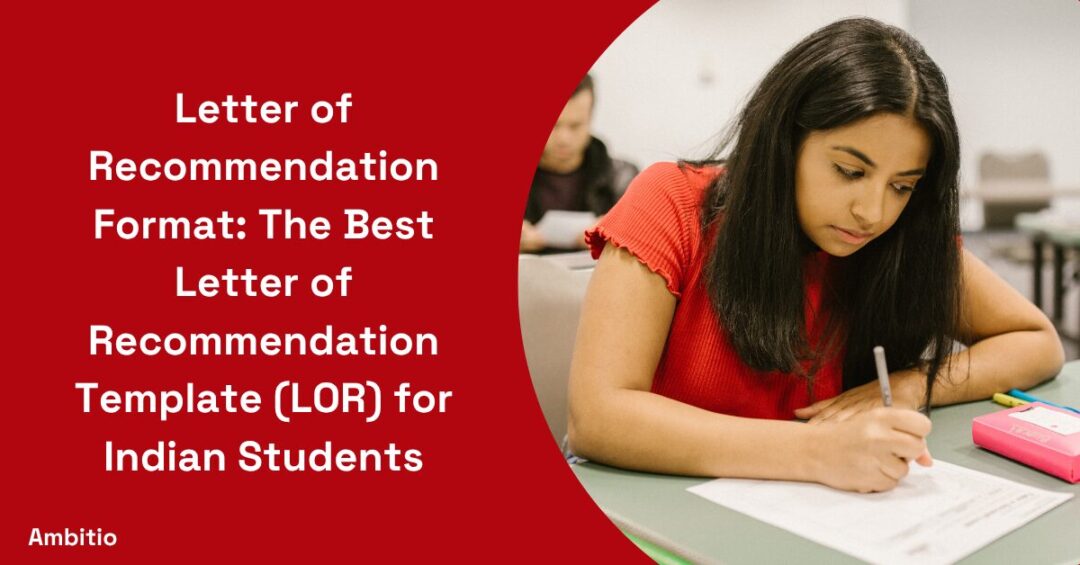11 December 2024
4 minutes read
Does a Letter of Recommendation Need a Date?

In the realm of professional and academic advancements, the role of a letter of recommendation cannot be overstated. Often, these letters serve as a pivotal component in decision-making processes, whether it be for employment, admissions to educational institutions, or other significant opportunities.
Amidst the various elements that constitute a strong letter of recommendation, one particular detail— the inclusion of a date — warrants special attention. This blog explores the significance of dating a letter of recommendation, its impact, and the nuances surrounding its use.
The Role of a Date in a Letter of Recommendation
Validating the Timeliness and Relevance of the Recommendation
The primary function of a date in a letter of recommendation is to establish the letter’s timeliness and relevance. This is particularly crucial in scenarios where the candidate’s skills and experiences are rapidly evolving, such as in technology, academia, or highly dynamic industries.
Aligning with Application Processes and Deadlines
In contexts like academic admissions or job applications, the date on the letter ensures that the recommendation is in sync with specific application cycles, highlighting its currency and, by extension, its reliability.
Enhancing the Authenticity and Credibility of the Letter
A date also adds a layer of authenticity to the document. It demonstrates that the recommendation is not a recycled, generic endorsement but a thoughtful, current appraisal of the candidate’s abilities and achievements.
Letter of Recommendation for Harvard University, check out this article: https://ambitio.club/blog/harvard-university-letter-of-recommendation
The Implications of an Undated Letter
Potential Misgivings About the Letter’s Relevance
An undated recommendation letter might raise questions about its relevance and currency. This could lead to doubts regarding the candidate’s recent accomplishments and current skill set.
Risk of Diminished Impact on Decision-Making
In competitive scenarios, such as job applications or academic admissions, where every detail counts, an undated letter could be at a disadvantage compared to dated ones, potentially diminishing its impact.
Best Practices for Dating a Letter of Recommendation
Standard Placement and Format of the Date
The date should typically be positioned at the top of the letter, adjacent to the recommender’s contact information, or immediately following the letterhead. The format should adhere to standard practices, varying according to the recommender’s geographical location.
Updating the Date for Reused Letters
For recommenders reusing a letter for different applications or opportunities, it’s advisable to update the date to reflect the current context, ensuring the letter remains relevant and effective.
Understanding the Difference: Reference Letter vs. Recommendation Letter
| Aspect | Reference Letter | Recommendation Letter |
|---|---|---|
| Primary Purpose | To attest to a person’s character, general abilities, and background. | To specifically endorse a person for a particular job, academic program, or specific opportunity. |
| Content Focus | A broad overview of the candidate’s character, ethics, and general performance. | Detailed insights into the candidate’s specific skills, achievements, and suitability for a particular role or program. |
| Customization | Generally more generic; can be used for various applications. | Highly tailored to the specific requirements of the position or opportunity being applied for. |
| Examples Provided | Usually fewer specific examples; and more focus on overall character and capabilities. | Includes specific examples and anecdotes that highlight relevant skills and accomplishments. |
| Length and Detail | Tends to be shorter and less detailed. | Often longer and more detailed, providing comprehensive insights into the candidate’s abilities. |
| Tone and Formality | Professional but can be somewhat informal, depending on the relationship with the candidate. | Usually more formal, emphasizing professional qualifications and achievements. |
| Usage | Used for a wide range of purposes, including general employment, character verification, or community positions. | Used for specific applications like a job in a specialized field, academic admissions, grants, or specialized programs. |
| Authorship | Written by someone who knows the candidate personally or professionally, but not necessarily in depth. | Written by someone who has closely worked with the candidate, often in a supervisory or academic capacity. |
| Impact on Application | Serves as a character verification or a general endorsement. | Acts as a persuasive tool tailored to influence the decision in favor of the candidate for a specific role or opportunity. |
For more detailed comparison, check out this article: https://ambitio.club/blog/difference-between-letter-of-recommendation-and-reference-letter
Crafting an Effective Letter of Recommendation
Key Elements to Include
When writing a letter of recommendation, certain key elements are essential to ensure its effectiveness. Here are the important points to include:
- Personal Introduction:
- Begin with a brief introduction of yourself, stating your position and your relationship to the candidate.
- Mention how long you have known the candidate and in what capacity.
- Candidate’s Full Name:
- Clearly state the full name of the individual you are recommending early in the letter.
- Clearly state the full name of the individual you are recommending early in the letter.
- Context of Relationship:
- Explain the nature of your relationship with the candidate (e.g., supervisor, professor).
- Provide details about how you have directly observed the candidate’s skills and qualifications.
- Specific Examples of Skills and Qualifications:
- Offer detailed examples of the candidate’s skills and achievements.
- Highlight instances where the candidate demonstrated qualities relevant to the opportunity they are pursuing.
- Tailored Content:
- Tailor the letter to the specific position or opportunity the candidate is applying for.
- Align the candidate’s strengths with the requirements or objectives of the position or program.
- Personal Qualities and Strengths:
- Discuss the candidate’s personal qualities, such as work ethic, leadership, and teamwork skills.
- Mention any unique attributes that set the candidate apart from others.
- Professional Tone and Clarity:
- Maintain a professional tone throughout the letter.
- Ensure that the letter is clear, concise, and free of jargon or overly complex language.
- Positive Endorsement:
- Clearly state your recommendation of the candidate.
- Express confidence in the candidate’s suitability for the position or program.
- Contact Information:
- Include your contact information for follow-up.
- Offer to provide additional information or clarification if needed.
- Conclusion with a Strong Closing Statement:
- Conclude with a strong statement of recommendation.
- Reiterate your belief in the candidate’s qualifications and potential.
- Signature and Date:
- Sign the letter to add a personal touch and authenticity.
- Date the letter to indicate its relevance and timeliness.
By incorporating these key elements, a letter of recommendation can effectively convey the candidate’s suitability and stand out in the selection process.
Tailoring the Letter to the Candidate’s Goals
Understanding the candidate’s aspirations and the requirements of the opportunity they are pursuing is crucial. The letter should be customized to reflect how the candidate’s skills and experiences align with these goals.
Conclusion
The inclusion of a date in a letter of recommendation, while seemingly a minor detail, plays a significant role in enhancing the document’s effectiveness. By ensuring the recommendation is timely, relevant, and authentic, the date becomes an integral part of a compelling endorsement.
FAQs
Does every letter of recommendation need a date?
Yes, ideally, to ensure relevance and authenticity.
Can I use a recommendation letter with an old date?
It’s best to update the date to align with your current application.
Where should the date be placed in the letter?
At the top, near the letterhead or the recommender’s contact information.
Is there a specific format for the date?
It usually follows the standard date format of the recommender’s country.
What if I forget to date the letter?
It’s advisable to add it as soon as possible before submission.

You can study at top universities worldwide!
Get expert tips and tricks to get into top universities with a free expert session.
Book Your Free 30-Minute Session Now! Book a call now




























